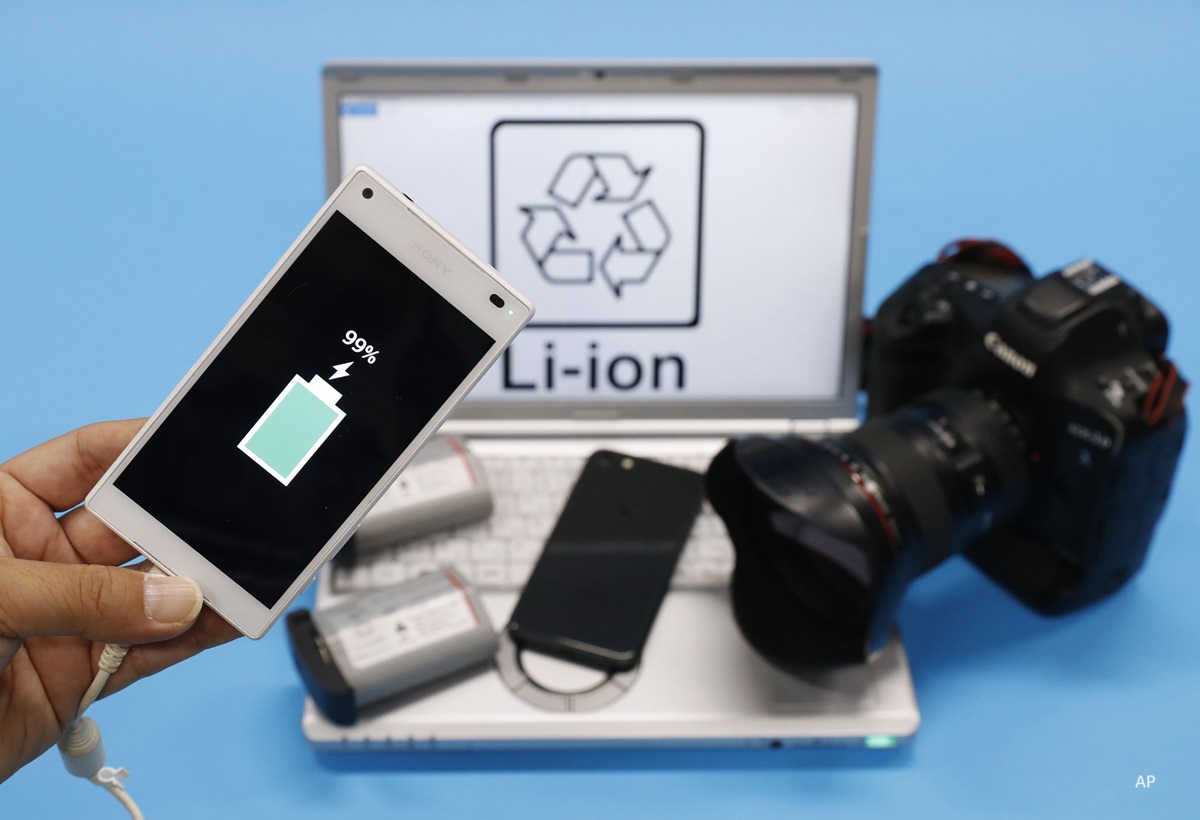
2019 saw the resurgence of gold investment demand, and subsequently, gold prices, which spiked nearly 20% in the third quarter to about US$1,550 per ounce. A similar rapid appreciation occurred in early 2016, which, at the time, we said would not last. Though our view proved true in the following months, today's environment is different. With the Federal Open Market Committee cutting the federal-funds rate three times since August 2019, gold's investment case has strengthened. We expect 2020 gold demand to be 8% higher than it was in 2018, leading to our 2020 price forecast of US$1,500 per ounce.
However, when it comes to gold as an investment, today's demand is tomorrow's supply. Investment-driven buyers, especially through exchange-traded funds, can quickly sell when real interest rates rise. ETF-held gold has reached record levels equivalent to roughly a year's worth of mine production, and its unwinding would significantly weigh on prices. Furthermore, the vacuum left by declining investment demand won't be filled by other categories. A combination of government initiatives and shifting preferences is driving slower growth in jewelry demand in China and India, the two largest markets, despite rising incomes. As such, we expect midcycle gold demand to be 9% lower than our near-term forecast, leading prices to decline to our midcycle forecast of US$1,250 per ounce in real terms by 2022.
With gold prices roughly 25% higher than our long-term forecast, we see limited investment opportunities among our coverage. Miners can create value, such as synergies from Barrick (GOLD) and Newmont's (NEM) Nevada joint venture, improved performance from Newmont's legacy Goldcorp assets, continued cost improvement at Newcrest's (NCM) Lihir mine, or the completion of new projects at Agnico Eagle (AEM) and Kinross (KGC). However, our forecast for declining gold prices outshines any operational upside, leaving shares trading roughly in line with or slightly above our fair value estimates on a risk-adjusted basis.
We expect gold prices to hold 2019's rapid gains before declining to our midcycle price
From June to September 2019, gold rapidly rose about US$250 per ounce, or nearly 20%, to roughly US$1,550 per ounce. The rapid gain was similar to the one in early 2016, which we said would not last. Though our view proved true, we think today's environment is different. We forecast 2020 gold prices of roughly US$1,500 per ounce. Over the next few years, we expect prices to fall to our real midcycle price of US$1,250 per ounce in today's dollars by 2022, which is roughly $US$1,370 per ounce in nominal dollars.
Our forecast for gold prices maintaining current levels before fading at midcycle conditions is predicated on our view of gold demand. We think 2020 gold demand will be 8% higher than it was in 2018, driven by stronger investment-related demand, mostly from ETFs and central banks. However, when support for gold as an investment fades during midcycle conditions, we forecast total gold demand in 2022 will be 9% lower than our near-term forecast, driving prices lower.
Our short-term outlook supports higher gold prices on elevated investment demand from ETFs
In the short term, gold prices tend to move based on investment demand, more so than any other end market. This is because investment demand is the most volatile source of demand, at times rising to be the second-largest category and at other times, declining and creating a negative demand shock (or, recycled supply). The current economic and interest-rate environment has fueled a resurgence in investment demand for gold. As the marginal demand source, this has led to a sharp rise in gold prices. The effect of resurgent investment demand on gold prices is exacerbated by the slow-moving nature of gold supply--changing mine supply is like turning a tanker ship. New mines can take a decade or more from discovery to full production, and even short-term production increases from bringing back mothballed capacity or brownfield expansions can take years.
As a result, rapid spikes in demand can only truly be met by recycled demand, or the sale of existing gold by current owners. To encourage current holders to sell, higher prices are needed.
Gold's investment attractiveness depends on interest rates and inflation
The marginal source of gold demand is investment. To understand the investment appeal and why it rises and fades, we look at gold's use as a safe-haven asset. For our purposes, we classify an asset as a safe haven if it holds, or even increases, its value during periods of market and economic uncertainty and downturns. A safe-haven asset should preserve capital, withstand market volatility, and provide diversification across a portfolio.
On one hand, gold is just a shiny piece of metal, but it's rare. Because of that scarcity, its value tends to rise with inflation. During periods of high inflation, the value of cash and any investments denoted in that currency tend to decline. In comparison, gold tends to maintain its value in real terms due to its scarcity, leading to higher prices in nominal terms. However, it offers no other potential return or payment because it's ultimately just a rock.
On the other hand, bonds can generate returns through coupons, but they're not very scarce. Although a Treasury offers interest returns, it will typically lose value to inflation since terms are agreed upon at issuance and last until maturity.
As a result, real interest rates, or the relationship between inflation and interest rates, are what determine gold's investment attractiveness. In an environment of negative real interest rates, when inflation exceeds interest rates, gold is generally more favorable than a Treasury. Conversely, in a positive real-interest-rate environment, when inflation is lower than interest rates, Treasuries are generally more favorable.
Lower long-term gold prices as nothing fills the vacuum from waning investment demand
At midcycle conditions, investment tends to be largely stable and is not sizable enough to be the source of marginal demand. Gold's attractiveness as an investment case tends to be weaker during healthy economic periods, particularly as higher interest rates increase the opportunity cost of holding gold. Though inflation tends to be stronger during these periods, we expect interest rates to increase if inflation exceeds levels central banks are comfortable with. In other words, for real interest rates to rise. As a result, we forecast total gold demand to be slightly down from 2018 levels but down 9% versus our 2020 forecast.
We forecast a mix shift in demand, as continued declines in technology demand and a reversal of investment demand is partially offset by more purchases from central banks and the jewelry end market. However, total demand will still lower by a few hundred metric tons, or roughly 9%, from 2020 levels.
Jewelry
As an individual category, jewelry is the single largest source of gold demand. From 2010 to 2018, it's the only category, other than central bank purchases, that's grown, albeit with some volatility year to year. Nevertheless, it typically accounts for 45%-60% of all gold demand in any given year.
Most gold jewelry purchases come from just two countries: India and China. While constituting less than 40% of the world's population and roughly 16% of the world's GDP, India and China account for roughly 60% of annual jewelry demand. However, the enormous jewelry consumption in both China and India is not simply a result of their huge populations, as purchases per capita are among the highest in the world and above higher-income countries.
The relationship between a country’s gold purchases per capita and income per capita varies widely, reflecting factors such as cultural significance and access to other forms of savings and investment. As such, it’s difficult to compare consumer preferences for gold jewelry across different countries on the income curve.
However, looking at China and India's gold jewelry purchases and income per capita over time, we note a stark change in recent years. As incomes initially rose from lower levels for these two countries, gold purchases per capita rose dramatically. However, in more recent years, gold purchases per capita have actually fallen as incomes have continued to rise. As a result, India and China's gold jewelry purchase intensity, or the amount spent on gold jewelry per person, has now fallen roughly in line with that of the U.S., which we estimate was roughly $18 per person in 2019. This is despite the fact that the U.S.' income level is roughly 5 and 9 times higher than that of China and India, respectively.
Although country-specific factors led Chinese and Indian consumers to buy more gold than most countries would at lower income levels, we think it is unlikely to lead to additional purchases as incomes rise. We see both near-term and long-term reasons for the purchase intensity to stagnate. In the near term, government actions in both countries have weighed on gold purchases. In China, Beijing implemented efforts to stem capital outflows, which included tighter restrictions on gold imports. In India, the government has long sought to minimize gold imports to strengthen the rupee. This included increased taxes to make gold more expensive to purchase.
Investment
Gold investment includes physical forms, mainly bars and coins, as well as investment vehicles, such as ETFs. As discussed in our short-term outlook, we view investment demand as the marginal source of demand, with nearly all volatility coming from ETFs. In comparison, physical gold investment has remained steadier.
For physical investment, we forecast a low-single-digit percentage decline in total bar and coin demand, as convenience and safety help ETFs gain further share of total investment demand. For ETFs, we assume negative demand in the midcycle. ETFs can be as big a source of supply as it can be a source of demand, depending on the investment environment. Because the motivations for ETF investors (near to medium term) are generally different than physical demand investors (long term), ETF investors are more likely to become net suppliers at times. We believe that at midcycle economic conditions, a weaker investment case will severely limit total demand for the category to roughly half of what it has been in recent years.
Central banks and other institutions
Central banks tend to be the second-smallest demand category after technology, generally representing 10% to 20% of total demand in any given year. Although the category has seen a resurgence in recent years, most purchases have come from just a few countries.
Of the 10 countries with the largest gold reserves, only Russia, China, and India have been net purchasers in the last five years, with Russia and China responsible for the bulk. Meanwhile, other large-economy countries have maintained steady levels of gold reserves for decades. Not all countries have been purchasers, either. From 2014 to 2019, Turkey reduced its gold reserves by 27% and Venezuela sold 56% of its gold reserves. In line with historical averages, we forecast about 1.5% growth of total annual central bank reserves, with most purchases to come from developing economies. Typically net exporters, developing economies often end up with surplus dollars, euros, and other currencies from trade partners. These countries often sell some of these cash reserves to build up gold reserves given the metal's safe-haven appeal.
Technology
Technology is both the smallest and fastest-declining category, though it's reached a steadier level in recent years. Gold's properties of malleability and conductivity make it attractive for electronics, dentistry, and other useful applications. However, its high cost has pushed for continued substitution in as many cases as possible, particularly for dentistry, down nearly 13% per year from 2010 to 2018, and other industrial applications, down nearly 7% per year. Electronics have declined by a smaller percentage of nearly 2.5% per year, as gold, used in trace amounts anyway, is hard to replace for certain applications. We forecast technology demand to continue to decline by a low-single-digit percentage as cheaper substitutes continue to take share.
Midcycle prices will be determined by current marginal cost of supply, not incentive prices
In our prior forecast, we had assumed that increased gold jewelry purchases fueled by rising incomes in China and India would necessitate the opening of new mines to meet demand. As such, our midcycle price was based on an incentive price. In our updated midcycle outlook, we forecast a decline in demand. As a result, we anticipate that current mine production will be enough. Based on today's cost curve, we forecast a midcycle price of $1,250 per ounce in today's dollars. Because we believe current mines can continue to produce gold for decades, we look at today’s all-in sustaining cost curve to determine our midcycle price.
We assume that roughly 30% of demand can be met by recycled supply, based on the average percentage of total supply since 2010. We believe this is a reasonable assumption, since there appears to be little variance over time, with a standard deviation of roughly 5% over the same period. Combined with our midcycle demand forecast that's lower than today's demand, we forecast a real midcycle price of US$1,250 per ounce as soon as 2022. On a nominal basis, we forecast a gold price of nearly US$1,370 per ounce in 2022.
Mine supply has been steadily increasing and should be enough to meet demand
Mine supply has steadily increased over the past several years, with most growth in the first half of the decade. Recent production has been relatively flat, as there have been few major new mines opened.
Recycling typically provides a meaningful amount of supply, ranging from 25% to nearly 40% in any given year, partly because mine supply is slow to adjust, struggling to increase or decrease with rapid changes in demand. For a new mine, the timeline from initial discovery to fully ramped-up operations can take 10 years or more. In addition, not only do new mines require significant capital investment, they carry significant inherent risk and uncertainty from estimated to actual performance. Compared with other industries, it's much more common for new mines to fail to deliver as expected, and with hindsight, turn out to be value-destructive investments. Gold is typically found in very small amounts, a few grams or less appearing in a ton of rock. Although geologists use the latest scientific methods and technology to estimate the gold contained within an ore body, large uncertainty remains until a mine begins operations and ramps up production.
Recycling tends to respond to higher gold prices, as current gold holders have incentive to sell. Although our forecast calls for investment demand to remain high over the next couple of years, we expect that it will largely be supplied through recycled gold and not last enough to encourage new production.
Reserves and resources could support steady gold demand for years
In aggregate, we think that mines currently in production are unlikely to run out of gold over the next several years. Although individual mines will reach the end of their lives eventually, we anticipate exploration and brownfield expansions will further extend mine lives or expand production at some mines as well as the addition of a small number of new mines.
With existing mine portfolios, the miners under our coverage could sustain current production levels for a decade or more, based on proven and probable reserves. Including the most recent measured and indicated resources that could be converted to reserves, production could be sustained beyond 20 years.








.jpg)













